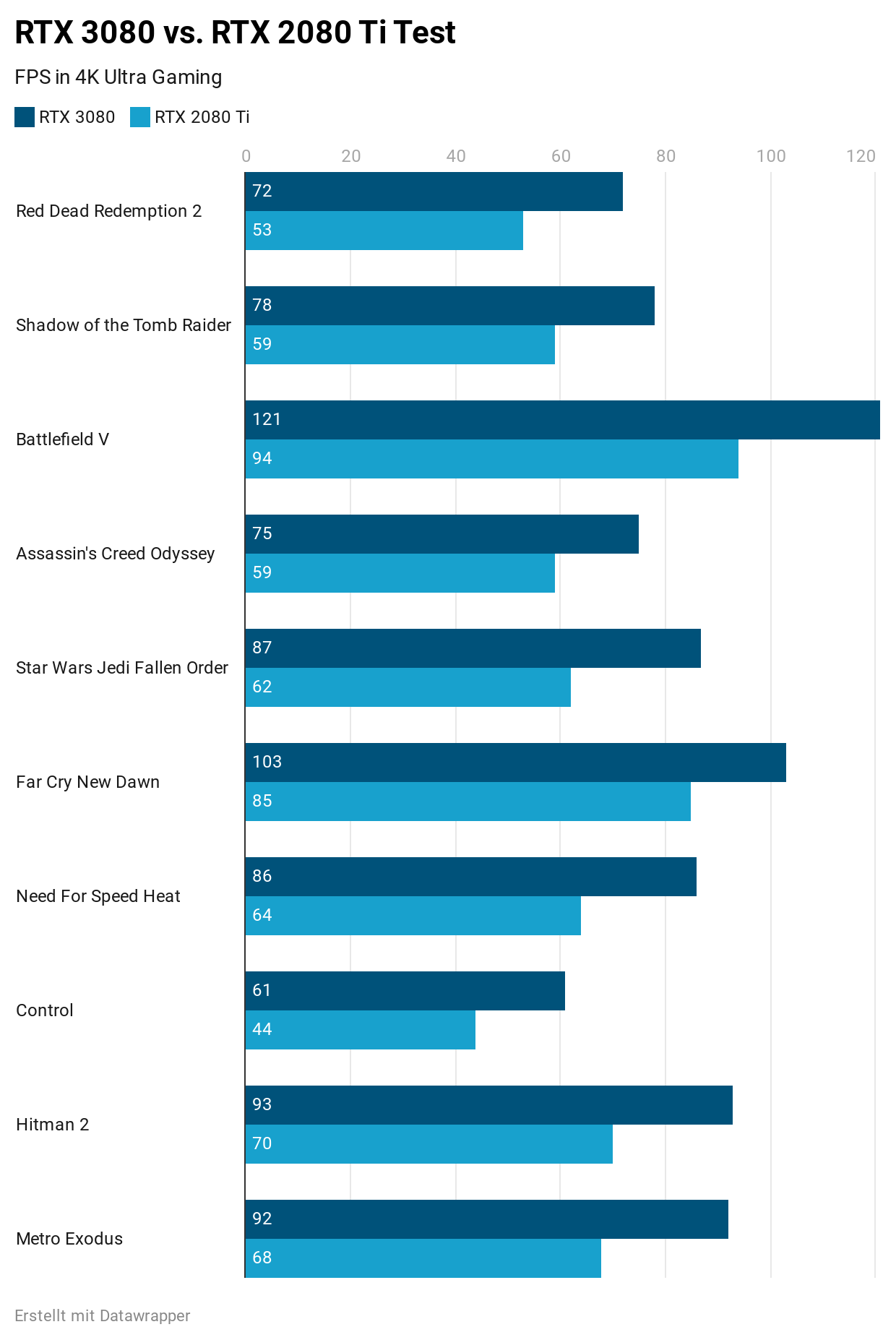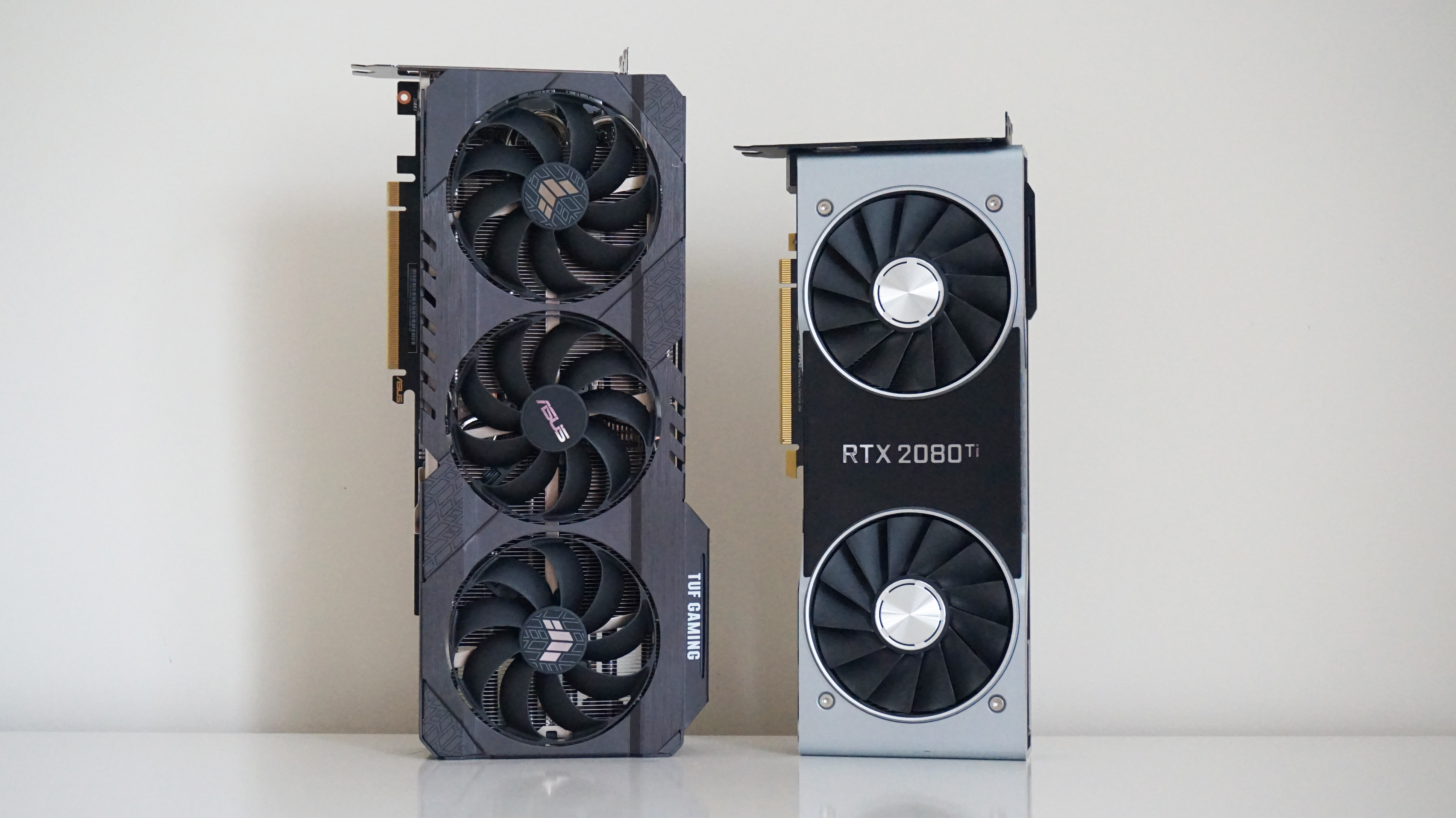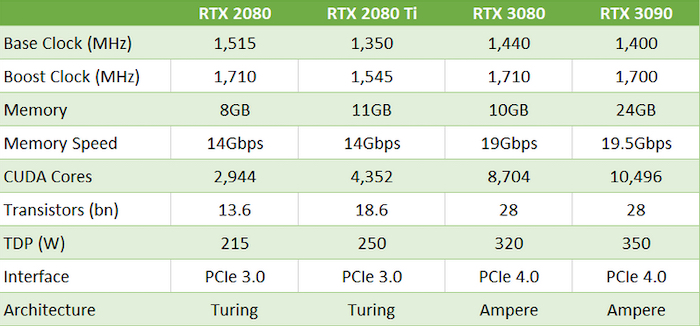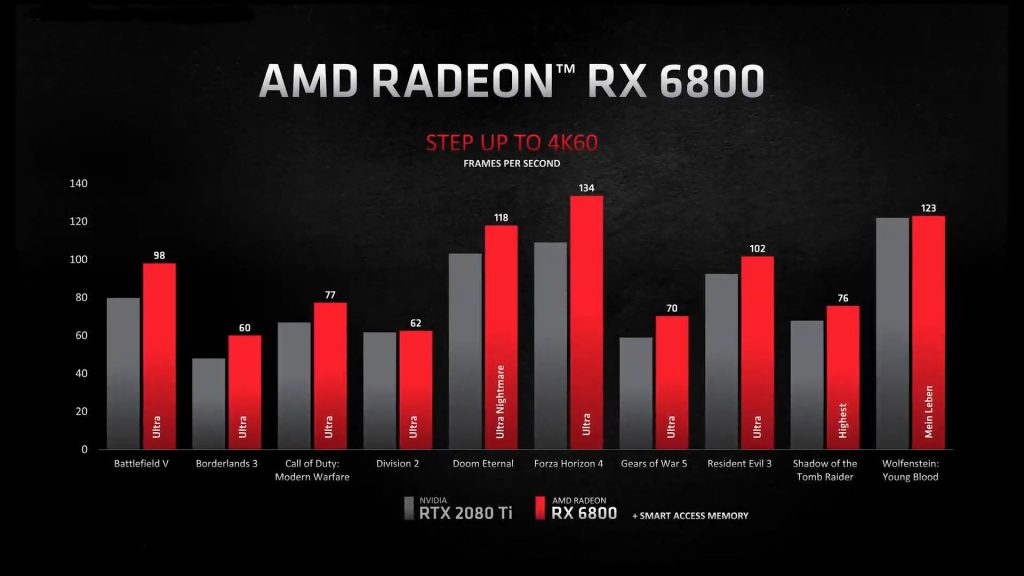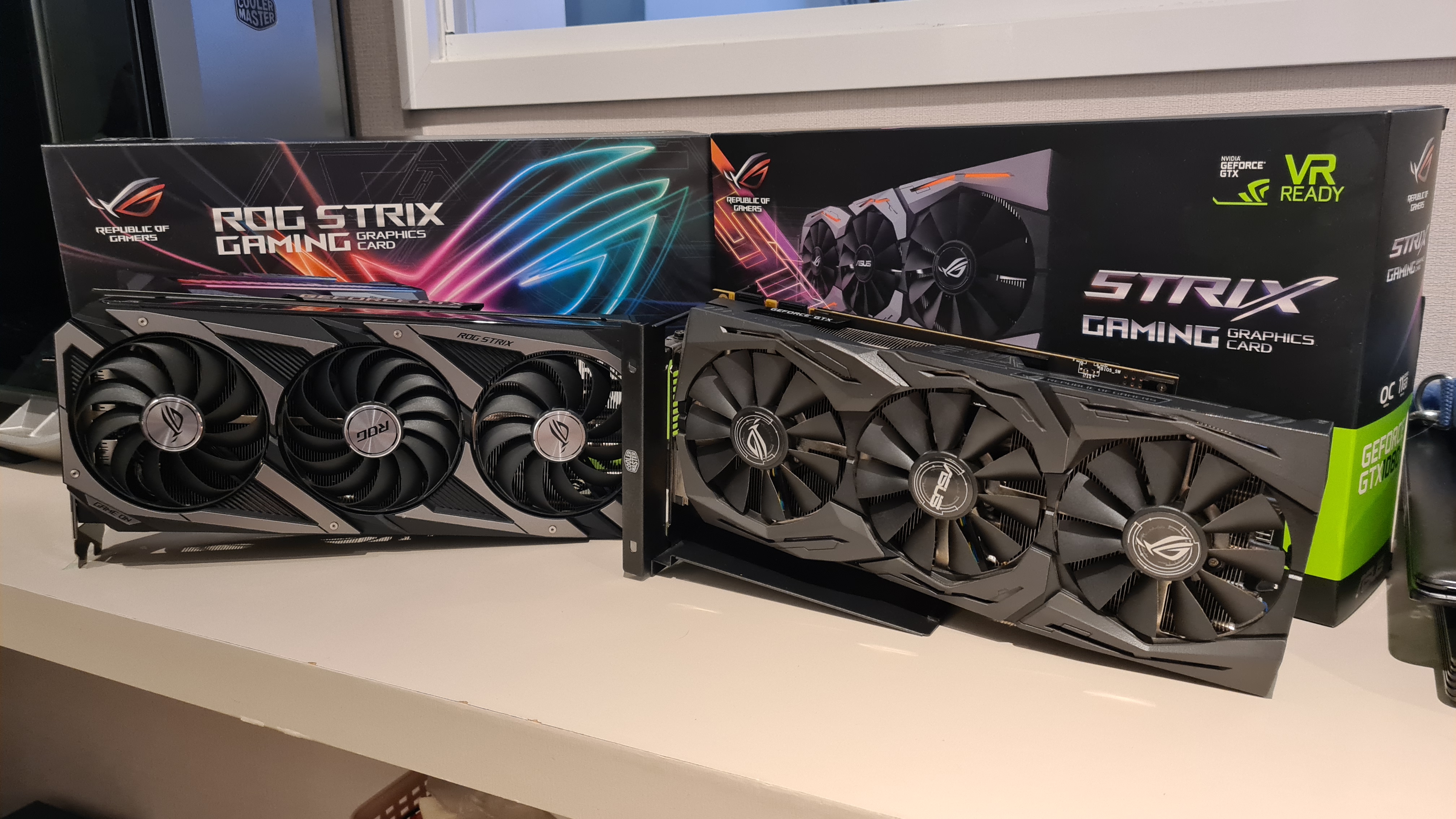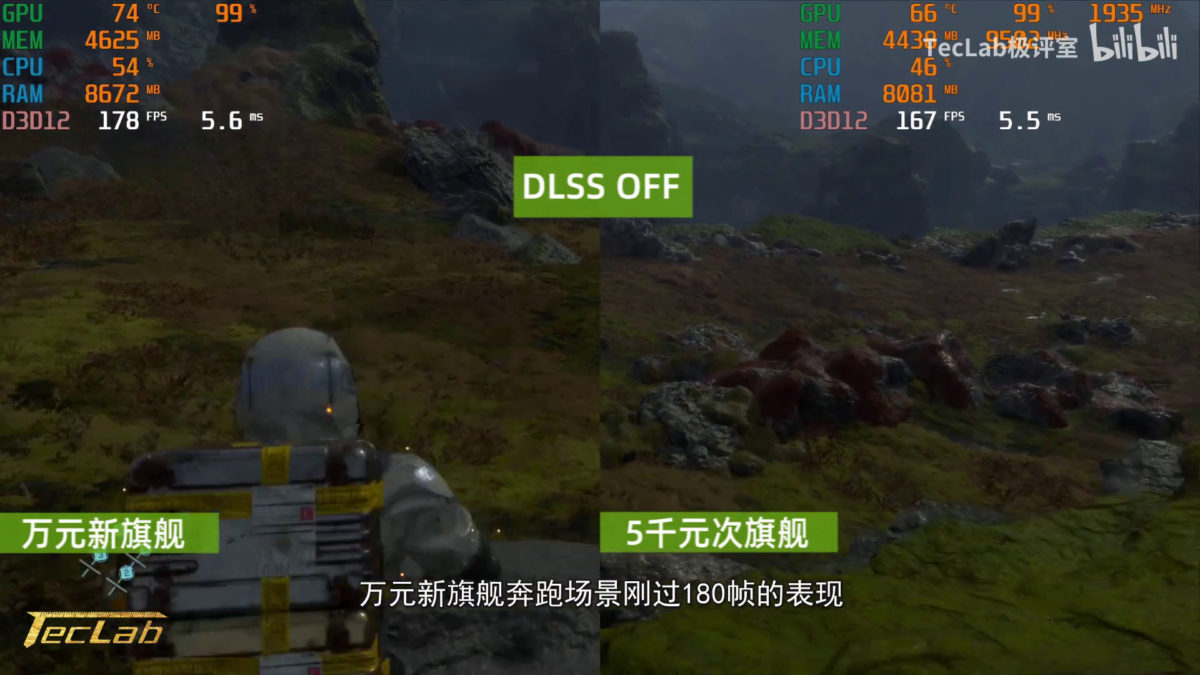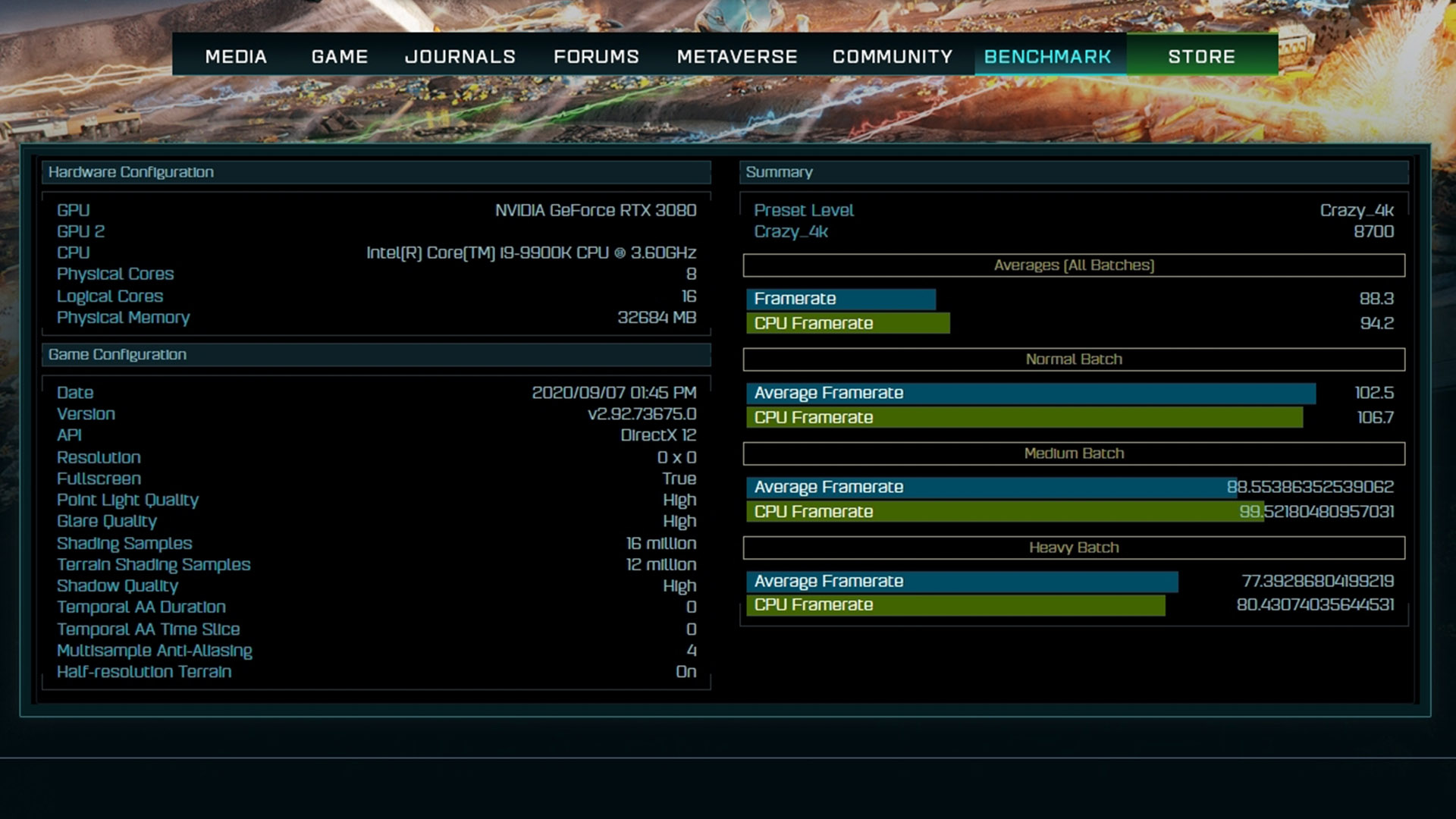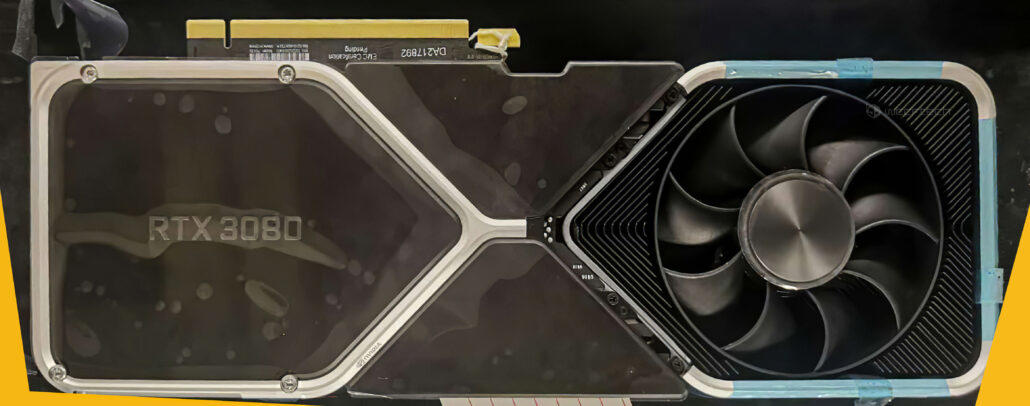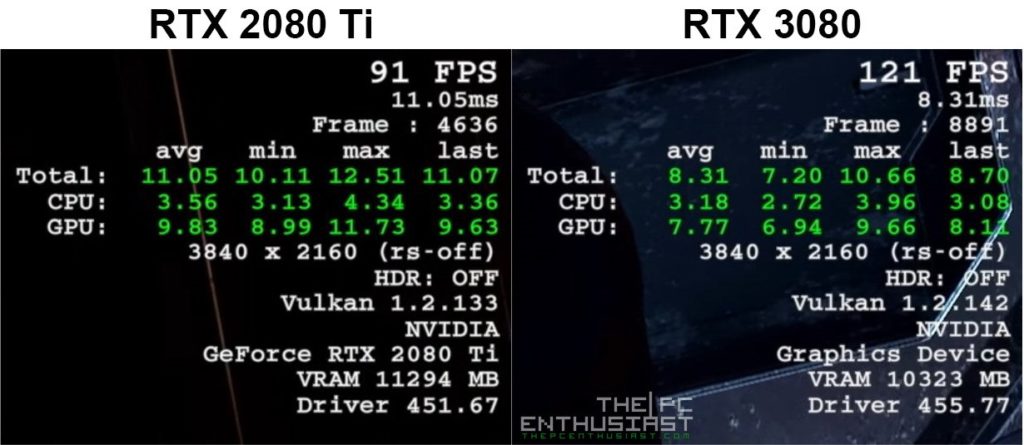When comparing GeForce RTX 2080 Ti and GeForce RTX 3080, we look primarily at benchmarks and game tests. Often you can find third-party models with higher clock speeds, better cooling, or a customizable RGB lighting. Most graphics cards have at least one DisplayPort and HDMI interface, but some monitors require DVI. Before you buy, check the TDP of the graphics card - this characteristic will help you estimate the consumption of the graphics card. An important factor when choosing between GeForce RTX 2080 Ti and GeForce RTX 3080 is the price. General performance parameters such as number of shaders, GPU core base clock and boost clock speeds, manufacturing process, texturing and calculation speed.
These parameters indirectly speak of performance, but for precise assessment you have to consider their benchmark and gaming test results. Note that power consumption of some graphics cards can well exceed their nominal TDP, especially when overclocked. We test a variety of games spanning various engines, genres, vendor sponsorships , and graphics APIs . We've also enabled temporal anti-aliasing to push these cards to their limits.
We run each benchmark at least three times and list the average result for each test. Game performance for the GeForce RTX 3070 Ti where we look at the bigger games played in 2021. Looking closely at the graphics card frame rate performance on Ultra graphics settings at 1080p, 1440p and 4K screen resolutions.
In comparison to the game recommended requirements of the 1000 most demanding games played today this PC hardware can run 1000. Firstly, it has about 17% more CUDA cores and RT cores than the RTX 3080. Secondly, it comes with 12GB of GDDR6X RAM, along with a 20% increase in bandwidth, giving creators and gamers an additional boost. However, the latest Nvidia graphics card also consumes about 10% more power than the previous model.
The Nvidia GeForce RTX 3080 Ti has a pixel rating of 186.5G Pixels/s and a texture rating of 532.8 GTexels/s. Both the video cards possess excellent Ray Tracing, DLSS and AI capabilities, support Direct X 12 Ultimate, and are VR ready. Battlefield 5 was tested in campaign mode by running through the same mission on both graphics cards. Interestingly the 2080 Ti actually had better 1% low results at 1080p, but this was the only time this happened.
This game has a 200 FPS frame cap by default which the 3080 was hitting, so I suspect this may be why its 1% low was behind, given the 1% low on the 3080 was higher than the 2080 Ti's average FPS at 1440p. That's a huge difference, but Control hits the RTX cards right where it matters most. So the extra video memory in the 3080 Ti is more adept at rendering a 4K scene with ray tracing and graphics set to maximum with no DLSS. Of course, the 80 RT cores and 10,240 CUDA cores also make a huge difference. The reality is that Control is now very playable at 4K with max settings for RTX even before you turn on DLSS thanks to the 3080 Ti. I've tested Metro Exodus with the game's benchmark tool, and this test saw some of the smallest differences out of the 11 titles tested.
At 4K the 3080 was 15% faster, and this was the lowest result at that resolution, then at 1080p the 3080 was 11% ahead. In Death Stranding the 3080 was giving me 1% lows that were ahead of the average frame rate of the 2080 Ti at 4K and 1440p resolutions, then a little behind at 1080p. At 1080p, the 3080 was 14% faster than the 2080 Ti in average FPS, 22% faster at 1440p, and 26% higher at 4K.
Shadow of the Tomb Raider was tested with the games built in benchmark. The 2080 Ti was still delivering above 60 FPS in this test with the highest setting preset at 4K, but the 3080 has a nice 26% lead. The difference is of course lower at lower resolutions, the 3080 still has a decent 22% higher average frame rate at 1440p, but then it's just 10% ahead at 1080p. Fortnite was tested with the same replay file with each graphics card, but as an esports title even at max settings we're getting high frame rates at 1080p and 1440p. Rainbow Six Siegestill dominates the Steam charts years after its launch, and Ubisoft supports it with frequent updates and events.
The developers have poured a ton of work into the game's AnvilNext engine over the years, eventually rolling out a Vulkan version of the game that we use to test. By default, the game lowers the render scaling to increase frame rates, but we set it to 100 percent to benchmark native rendering performance on graphics cards. Similarly, the 3080 Ti also tackled Control's demanding ray tracing well. It reached 85 to 90 fps in 1,440p with maxed out graphics and medium ray tracing settings.
While impressive, though, that's only 5 to 10fps more than what I saw on the 3080. Oddly enough, both cards delivered similar performance while playing in 4K with NVIDIA's DLSS technology, which upscaled the rendered graphics from 1,440p. I was able to crank the ray tracing settings up to high and still see a steady 65 to 70fps on the 3080 and the 3080 Ti.
It could just be that game isn't fully optimized for NVIDIA's faster hardware yet. Well, RTX 3080 Ti is basically an RTX 3090 with slightly fewer cores and half the amount of memory that RTX 3090 has. RTX 3080 Ti does beat RX 6900 XT in some games while in others it lags behind a little bit and on average it is only 2% faster than RX 6900 XT.
RTX 3080 also performs very well and delivers great performance for the price. I think RTX 3080 Ti is a quite forgettable card as it costs as much as the RTX 3090 and comes with a lesser core count and most importantly it has half of the VRAM that RTX 3090 has. So, if I have to choose here then I think RTX 3080 or even the RX 6900 XT are the most sensible options for 1440p and 4K gaming. If you have any queries then do ask me in the comment section below.
The release of RTX 3080 Ti in the Nvidia RTX 30 series has made the high-end graphics card market quite interesting. It is now the second most powerful graphics card in the GeForce RTX 30 series, pushing RTX 3080 to the third spot. The major competitors of the RTX 3080 Ti are the RTX 3090 and AMD Radeon RX 6900 XT. RTX 3080 Ti comes with lots of features and offers great 1440p and 4K gaming performance but when it comes to pricing then RTX 3080 Ti is way expensive than RTX 3080 and RX 6900 XT but is somewhat cheaper than RTX 3090. The card is facing a lot of criticism from the gaming and tech community because of its very aggressive pricing compared to the performance it offers with its major competitors.
So far, we've focused on gaming performance using traditional rasterization graphics. We've also excluded using Nvidia's DLSS technology in order to provide an apples-to-apples comparison. Let's change things up for a moment and look at ray tracing performance, with and without DLSS 2.0, where applicable. We're only showing DLSS results on the 3080 Ti, and we used the Quality mode in the six games where it was supported.
AMD's FSR will provide an alternative to DLSS in the coming months, though we don't yet have hands-on experience with it, so we can't comment on the image quality. We'll also confine testing to 1440p and 1080p here since native 4K with ray tracing tends to push even the fastest GPUs beyond their reasonable limits. This is the same testing we used in our recent AMD vs. Nvidia Ray Tracing Battle.
Welcome to the Nvidia RTX 3080 vs RTX 2080 Ti benchmark comparison. In this review, we will take a deep look at how these two graphics cards compare to one another, as well as how these hardware specs deliver in gaming performance. Antony Leather I've used the latest drivers from Nvidia and AMD as well as a fully up-to-date version of Windows 10 as of 31st May 2021. As we're dealing with high-end cards in this review, my tests focus on 2,560 x 1,440 and 4K resolutions.
I've tested games with DLSS and ray tracing enabled, but also disabled on occasions - I'm very much in favor of using these features where they're available, but can appreciate not all will want to. As we're dealing with ultra high-end cards here, I've only included the RX 6900 XT to save time, but will be including the RX 6800 XT in my RTX 3070 Ti review. Starting out with Microsoft Flight Simulator, I've got the newer 3080 shown by the purple bars, and the older 2080 Ti below shown by the red bars. The three resolutions tested are on the left, starting from 1080p down the bottom, 1440p in the middle, and 4K towards the top.
In this test there was only a minor difference at 1080p, then the margin grows as we step up to higher resolutions. At 1440p the 3080 was 16% faster than the 2080 Ti, though this was a below average result out of all 11 games tested at this resolution, then at 4K the 3080 was reaching 21% higher average frame rates. We're comparing the $1,200 GeForce RTX 3080 Ti against Nvidia's Founders Edition models of the $1,500 RTX 3090 and $700 RTX 3080, of course, as well as AMD's rival $1,000 Radeon RX 6900 XT.
That said, because the 3080 Ti is essentially a 3090 with less memory, its ray tracing and DLSS performance should be nearly identical to that card's. You can see how the comparison GPUs all handle ray tracing in our Radeon RX 6900 XT review. Brad Chacos/IDGAMD's rival Radeon RX 6900 XT, on the other hand, packs in more raw capacity—16GB—but of the slower GDDR6 variety across a smaller 256-bit bus, so it only has an effectively memory bandwidth of 512GBps. That's a bit deceiving though, as AMD's RDNA 2 architecture includes a very high bandwidth "Infinity Cache" right on the GPU die itself that can handle many frame buffer tasks without needing to access the graphics card's memory. Nvidia's cards lack a similar feature and rely on the raw power of GDDR6X over a wider bus.
In practice, however, all of these high-end GeForce and Radeon cards deliver plenty of bandwidth and performance for 4K gaming. The most important thing to look at is the CUDA core count, as that's a key indicator of performance for Nvidia's graphics cards. With a whopping 10,240 cores, the GeForce RTX 3080 Ti isn't much of a cut-down GPU—the RTX 3090 has 10,496. Our benchmarks will show it leaving the vanilla 3080 in the dust and landing right next to the 3090 in raw gaming performance.
Even the prices are low for the RTX 3080 series graphics card; still, most of the hardcore gamers will see the performance boost before buying. For example, if a person is getting decent FPS above 60 for 4k gaming on his/her RTX 2080 Ti, he or she will surely not be going to upgrade. The features that are exclusive to RX 6900 XT include USB Type-C connector support, Radeon Image Sharpening, and Smart Memory Access that enables the CPU to access all graphics card memory for improved performance in select games. For SAM to work, a Ryzen 5000 series CPU and a 500 series motherboard are needed.
The arrival of the Ampere generation did a lot to diminish the awkwardness or fiddly nature of 4K gaming, but the RTX 3080 Ti truly squashes it. Setting up for high performance 4K gaming remains a pricey investment, but you needn't be as cautious as we once had to be on a game-by-game basis. You can relatively comfortably set your game to high or ultra settings and get comfortable, even high, frame rates at 4K. There's potential for far more promising third party cards, but then we still have the price conundrum. This card was probably originally slated to be a $999 competitor to the RX 6900 XT, but in the current market, Nvidia has bumped the price to reap some of the profits that the AIBs and suppliers have been enjoying.
Since everything we'd like to recommend ends up costing twice as much as it "should," and much of the price gouging doesn't end up going to Nvidia , this is what we get. If you thought the RTX 3090 was too expensive when it launched at $1,500, be prepared for slightly lower performance, half the VRAM, and higher street prices on the RTX 3080 Ti. Well, higher than the 3090 launch price, at least, since the RTX 3090 now basically sells at Titan RTX and Titan V levels these days. Instead of a marginally higher price than the RTX 3080, the MSRP is 70% higher and the RTX 3080 Ti is only about 10–12% faster on average.
Plus, as we mentioned above, the Founders Edition cooler can't keep up with the additional GPU cores and GDDR6X memory. Looking at generational improvements, the RTX 3080 Ti is potentially more than double the compute performance of the 2080 Ti, with nearly 50% more memory bandwidth. In practice, we expect performance will be about 40–50% faster than the 2080 Ti, but that will mostly be at 4K and 1440p.
Buying a GPU like this for 1080p gaming (unless you're playing games with lots of ray tracing effects) would be a waste of money. Starting with the RTX 3080 Ti and 3090, they have nearly the same number of CUDA cores, Tensor cores, and ray tracing cores. Clock speed, memory speed, and memory bandwidth are nearly identical, too. Yeah YouTube videos are part of what I'm doing, but most of them compare pancake games at 4K resolution. Like the Vive Pro 2 is 5K at max resolution, but of course that's two perspectives being rendered simultaneously. So I would imagine the overhead is greater than a single 5K image.
It's within a percent or two of the 3080ti, not worth 300 bucks IMO. The ti is almost double the price, but it does have noticeable benefits over the 3080, and VR isn't going to be getting any less demanding on hardware. It'll probably come down to which of the two ends up back in stock first. However, the difference you're getting versus the RTX 3070 is much starker, in many cases boosting performance by around 20fps. As always, there are some games that are much closer, such as Final Fantasy XV and Assassin's Creed Valhalla, but on the whole you're getting substantially more performance at this resolution with one of the RTX 3080 cards.
That might make the RTX 3080 more tempting for those with high refresh rate 1440p gaming monitors , but if you're not so fussed about playing games on max settings, then the RTX 3070 will do you just fine. This is yet a new addition to the RTX 30 series, so what is the difference between the NVIDIA GeForce RTX 3080 Ti compared to the 3090 or the 3080 without the Ti? From a specs perspective the Ti has about 1,500 more CUDA cores but slower boost and base clock rates. The Ti comes with 2GB more memory and 64-bit faster memory interface. For the base editions, they look near identical (our is different but we'll get into that in the next section). At 4K the 3080 is now more than 24% faster than the 2080 Ti on average.
The 3080 has double the CUDA core count, kind of but not really, it's an architecture change which won't offer big gains for gaming. The 2080 Ti has an extra gig of VRAM, but the 3080's newer GDDR6X memory is faster, and its base and boost clock speeds are faster too, though it does also use more power. Specifically, the CUDA cores are identical in the RTX 3080 Ti and 3090, as well as the number of ray tracing and Tensor cores. Moreover, they are also similar when it comes to clock speed, memory bandwidth, and speed. However, the latter has a larger memory at 24GB, while the former only has half the size of the 3090's memory.
RTX is hitting more games and as developers start supporting this feature, more people might be attracted to the ray-tracing aspect of these graphics cards. With that said, the RTC 3080 does allow you to play games at 4K at a practical price point. Note that these benchmarks are the worst-case scenarios and you can get better performance in games by turning down some settings. Finally, here's an overclock stepping chart from our process of overclocking the 3080 FE card. This is all rough notetaking with the intention of quickly establishing a stable clock. We most commonly ran into power limits, so shunt resistor mods may help here.
We also observed a regression in performance with the 100MHz core offset and 900MHz memory offset, falling below stock. One of the best games of 2019,Metro Exodusremains one of the best-looking games around, too. The latest version of the 4A Engine provides incredibly luscious, ultra-detailed visuals, with one of the most stunning real-time ray tracing implementations released yet. The Extreme graphics preset we benchmark can melt even the most powerful modern hardware, as you'll see below, though the game's Ultra and High presets still look good at much higher frame rates. According to Geekbench, the RTX 3080 Ti will feature 80 Multiprocessors .





